Newsletter
Current
Previous
|
December 2016
|
|
|
|
|
Trees - where would we be without them?
|
|
|
 With unseeing eyes, thousands of us walk past trees which may have been there for many years. Where would we be without them? Well, nowhere. It's estimated that a mature leafy tree in one season produces enough oxygen for ten people to inhale for a year. There are so many reasons why trees are important to us, too many to cover here. With unseeing eyes, thousands of us walk past trees which may have been there for many years. Where would we be without them? Well, nowhere. It's estimated that a mature leafy tree in one season produces enough oxygen for ten people to inhale for a year. There are so many reasons why trees are important to us, too many to cover here.
The tree occupying our attention at the moment is the traditional Christmas Tree, which is usually a conifer. Nice to have a ritual of bringing a tree into your house, but of course it's often a dead one.
In Earley we are proud of our remaining live ancient trees, 509 in total, mostly oaks, recorded and mapped by the Wokingham District Veteran Tree Assn., which next year celebrates its tenth anniversary (an excellent website, please look at the map). If only trees could talk! Some of our non-native local trees are uncommon and may have a fascinating story to tell, such as the Wellingtonia or Sequoiadendron.giganteum. (Another interesting non-native Earley tree is Ginkgo biloba, newsletter August 2015 issue 40)
|
|
|
|
|
A FUTURE COLOSSUS
This is the story of one of the most impressive trees on the planet, Sequoiadendron giganteum, or the Giant Sequoia of the Sierra Nevada, California. Our knowledge of this tree began with the Californian Gold Rush, late 1840s/early 1850s. Earlier discoveries by Europeans made little impact until the discovery of gold, causing a huge influx of people to the area, and the Big Tree's cover was blown. So began the eventual destruction of much of the Giant Sequoia groves. Long before this the local Native Americans, the Miwok and the Western Mono, knew and revered them.
 On the Wokingham District Veteran Tree Assn. website map, tree no. 3369 is a Sequoiadendron giganteum or Giant Sequoia. It is also known in the UK as a Wellingtonia. This tree is situated in the Harris Garden, Reading University grounds. However, there is another S. giganteum on the footpath from the Beech Lane entrance to the rustic bridge. You can't miss it, tree no. 5713 (photo above). This imposing tree catches the eye with its soft, spongy bark of a distinctive reddish colour, especially when highlighted by the sun. Both these trees are mere infants compared to those in their native California. On the Wokingham District Veteran Tree Assn. website map, tree no. 3369 is a Sequoiadendron giganteum or Giant Sequoia. It is also known in the UK as a Wellingtonia. This tree is situated in the Harris Garden, Reading University grounds. However, there is another S. giganteum on the footpath from the Beech Lane entrance to the rustic bridge. You can't miss it, tree no. 5713 (photo above). This imposing tree catches the eye with its soft, spongy bark of a distinctive reddish colour, especially when highlighted by the sun. Both these trees are mere infants compared to those in their native California.
Arguments raged for years over the correct nomenclature for the Giant Sequoia, and the naming of the tree Wellingtonia by the British was particularly galling to the Americans. The late Alan Mitchell, one of our foremost tree experts, includes the two genus of redwood in his Field Guide as follows:
Sequoiadendron: Sequoidendron giganteum (aka Wellingtonia, Giant Sequoia, Big Tree, Mammoth Tree or Sierra Redwood. Still called Giant Redwood by some).
Sequoia: Sequoia sempervirens (aka Coast Redwood)
These two species are both natives of California, requiring very different climatic conditions. They include the tallest (S. sempervirens) and the most massive (S. giganteum) trees on the planet.
S. giganteum thrives on the western slopes of the Sierra Nevada mountains, and S. sempervirens on the foggy, coastal area of California.
They are among the oldest living things on Earth, oldest by ring count 3,500 years. An estimated 70% or more of ancient old-growth redwood trees has been displaced by environmental changes or cut down. The Giant Sequoia known as Discovery was felled in 1853; what remained was named the Stump, and tea dances were held on it.
HOW DID OUR GIANT SEQUOIA ARRIVE IN WHITEKNIGHTS?
If you have a curious nature, you might wonder how tree no. 5713, towering over its neighbours of mostly native British trees, made the leap from California to a small English wood. For that we have to thank an early plant hunter, whose story is almost as compelling as the Big Tree, which you can read in the next newsletter.
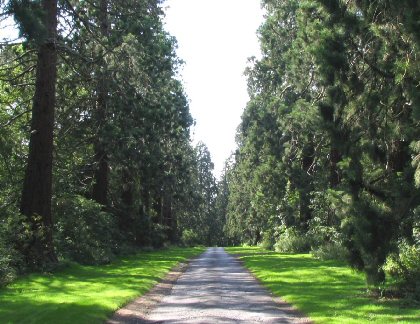
|
King Sequoia by William C. Tweed - dispels the many myths, gives much information on the Big Tree.
See here for another local tree.
Wellington Court, Spencers Wood
(Photo WDVTA)
caption corrected April 2017
|
|
|
Still on the subject of trees, an update on the
Earley Community Orchard
Since the planting in February, the orchard has been progressing well, despite the failure of the Beurre Hardy pear tree (photo below) soon afterwards. We're not sure if this was damaged during planting, or by some activity near the orchard.
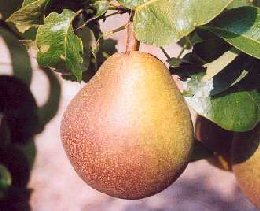 Because of the very warm summer, we found a goodly crop of weeds was taking over the plots around the trees by early August. Thanks, however, to some of Grahame's Wednesday volunteers and members of the orchard group, we were able to clear and re-cut the plots in two sessions in mid-August; at this time, we also added bark chippings to the plots to slow the growth of any further intruders. Because of the very warm summer, we found a goodly crop of weeds was taking over the plots around the trees by early August. Thanks, however, to some of Grahame's Wednesday volunteers and members of the orchard group, we were able to clear and re-cut the plots in two sessions in mid-August; at this time, we also added bark chippings to the plots to slow the growth of any further intruders.
Despite the lack of rain, the trees continued to put on steady growth, although the second pear tree developed pear rust, a recent arrival in the UK. The affected leaves were removed, and the tree seems to be growing.
In mid-October, however, there was a slight set-back: the glass covering on the recently-erected information board (rescued from the former 'Maiden Over' pub, with Tesco's permission) was broken deliberately. This was the first indication that the orchard was becoming a target for vandalism. During the half-term week, there was damage to 10 of the trees, although we lost only one (a Greensleeves apple): this will be replaced, along with the Beurre Hardy pear. The rest of the damage seemed to be confined to the supporting stakes, and new ones have now been put in place.
The committee is considering whether any of the trees need to be pruned, and will arrange to do so if necessary. In the meantime, we are looking forward to seeing the trees survive the winter ahead, and hope for a good show of blossom next Spring.
Jean Hackett
|
| |
|
Climate Change:
Conference of the Parties at Marrakech (COP22) closed on 18th November. Here is a summary of the outcomes.
Q&A at University of Reading on 10th October was chaired by Prof. Brian Cox . An expert panel answers many of the questions you might wish to ask.
|
| |
|
'Smart M4' Junctions 3 to 12:
The Government has decided to go ahead with 'All Lane Running' on the hard shoulder at a cost of hundreds of millions of pounds, despite many objections. The objectors certainly seemed to have the best of the media coverage - perhaps most encouraging were the readers' reactions reported by Get Reading which were largely hostile.
Meanwhile the M4 seems to suffer serious incidents almost every other day, causing chaos for the motorway users and for people struggling with traffic diverted through Reading.
Comments on Smart Motorways from the RAC and also Reading Friends of the Earth
John Booth
|
| |
|
Park-and-Ride: Wokingham has approved its planning application (No. 161596) for Broken Brow - just to the east of Kennet Mouth - despite objections from EEG, Earley Town Council, ACER, and others.
One remaining argument is that it's not a good use of £3.6 million. Alternatives include better and cheaper bus services all the way from the massive new housing planned for Wokingham's 'Strategic Development Locations'.
East Reading Mass Rapid Transit: Bridging Kennet Mouth - to carry buses from Suttons Seeds to the Reading town centre - would be even more damaging to the amenity of the riverbank, and would cost around £20 million. An alternative is to use one lane of London Road between Suttons Seeds and Cemetery Junction as a bus lane. See the arguments against on Facebook.
John Booth
|
|
|
History note about Broken Brow,
extracts from Arborfield Local History Society
THE KENNET'S MOUTH AT EARLEY. BY ERNEST W. DORMER.
The Old Wharf and Ferry. Breach family history
It will be remembered that about thirty-five years ago, when the Great Western Railway was widened, a Saxon cemetery was found near the Dreadnought on the piece of land called "Broken Brow". The discovery raised some interesting problems, not the least intriguing of which was whether there had been an important settlement at Earley, altogether independent of Reading and Sonning, before the Norman invasion. The question has not yet been thoroughly explored, but it is interesting from the fact that the Wharf might conceivably have had its origin in such a settlement. At the moment it would not be safe to go further than this…
THE DREADNOUGHT'S PREVIOUS NAME
To revert to the lease to Peter Breach. It would now be difficult to locate the site of the buildings newly erected in 1733 on the land granted to him; but the old inn known as the Dreadnought deserves a word or two in this connection since it was the home of the Breach family for many years. A century or so ago it was called The Broken Brow - from that persistent place-name we have before encountered - and there is a tradition that long before it was an inn, it was a shooting box for the lord of the manor. The present building is about two hundred years old, and until early Victorian times appears to have been the home of the Breaches, who, in addition to being fishermen, owned reed or withy beds on various parts of the river… (Finish of extracts)
From the 'Reading Mercury', 18th February 1933
|
|
|
TALKS AND WALKS
GREEN FAIR - the perennial favourite every August in Maiden Erlegh Nature Reserve.
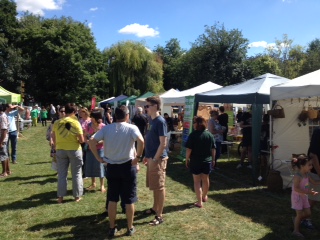 2016 had a big turn-out, and was the usual great success; for once the weather was kind.
Photo by Verity Smith
|
|
BATS AND A BREW arranged by Charlotte, Erlegh Elfins
23rd September, Maiden Erlegh Nature Reserve: What a lovely evening. We had 46 people from 3 years to around 70! The bats performed beautifully and the weather was perfect! Charlotte
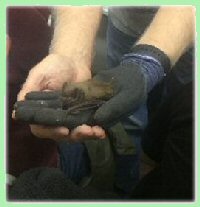 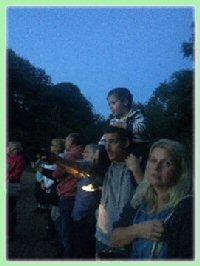
This charming little bat, left, is a pipistrelle and probably the most successful house-roosting bat, so small it can climb into slots less than 10mm. It also roosts in tree holes, crevices, and in bat boxes.
See also the report on EEG Bat Walk, May 2011.
|
|
A TALK BY DR MICHAEL KEITH-LUCAS ON
THE USES OF POLLEN IN FORENSIC SCIENCE
  On 21st Nov Dr. Keith-Lucas, retired senior tutor in Plant Sciences at Reading University. gave a fascinating talk on how pollen can be used in solving crimes of fraud, theft, fire-arms offences, bombings and murder, and how pollen and spores disperse and arrive at the scenes of crime. Not only does he help the police to pinpoint criminals but he uses his skill in other ways. Examination of honey can determine whether the description on the label is truthful or fraudulent, e.g. there is more Manuka honey on sale than the bees could produce! The pollen release calendar can help medical authorities on when pollen can cause asthma attacks. The talk was very well attended. On 21st Nov Dr. Keith-Lucas, retired senior tutor in Plant Sciences at Reading University. gave a fascinating talk on how pollen can be used in solving crimes of fraud, theft, fire-arms offences, bombings and murder, and how pollen and spores disperse and arrive at the scenes of crime. Not only does he help the police to pinpoint criminals but he uses his skill in other ways. Examination of honey can determine whether the description on the label is truthful or fraudulent, e.g. there is more Manuka honey on sale than the bees could produce! The pollen release calendar can help medical authorities on when pollen can cause asthma attacks. The talk was very well attended.
|
|
|
NEWS FROM BEYOND EARLEY
A life without bananas and apples: A major new UN report led by Reading University warns that the decreasing number of bee pollinators will wipe out the apple industry. Take heed, those who oppose local wildflower areas.
Practically every banana consumed in the western world is directly descended from a plant grown in the Chatsworth House hothouse 180 years ago, and cultivated by Sir Joseph Paxton.  The Cavendish is propagated by conventional vegetative reproduction. Missionaries took the plant abroad and cultivation spread. Panama Disease, which wiped out an earlier variety of banana, has developed a new fungus even more deadly, capable of killing the Cavendish. The Cavendish is propagated by conventional vegetative reproduction. Missionaries took the plant abroad and cultivation spread. Panama Disease, which wiped out an earlier variety of banana, has developed a new fungus even more deadly, capable of killing the Cavendish.
Rhino Crisis: Mass slaughter of rhinos in Africa has increased for the 6th year. Prince William visited Kaziranga National Park, Assam, India in April, which has 2000 great one-horned rhinos, as well as tigers and elephants. A rhino had been killed by poachers the day before his visit, and just hours after the British Royal couple William and Kate's visit, a male rhino was shot dead using AK-47 assault rifles. By June this year, 12 had been killed. Forest guards have been shot in the past.
|
|
EARLEY WILDLIFE SIGHTINGS AND GARDEN SURVEYS
Sheila: October Not quite a migration of wildebeeste, but one seasonal phenomenon was a squadron of squirrels feeding on the seeds of the hornbeam trees near Instow Road.
Gillian: Sept 14th A lucky sighting of a hedgehog on front lawn. Oct 15th Today harlequin ladybirds climbed the sunny house walls seeking a place to hibernate. Saw young squirrel being carried in mother's mouth down a wall and later being fed crab apples. Oct 26th Dozens more harlequins climbing the warm wall to top in the sun to hibernate. Oct 29th Green woodpecker attacked and chased by magpie. Woodpecker ended up on its side being viciously attacked while on the lawn. I shouted and disturbed it. Woodpecker had previously frequented the garden over several days.
Margaret: May 7th Sparrowhawk mobbed by starlings, more sightings of sparrowhawk low over garden in June and July. On Aug 13th goldcrest (see below) flitting in shrubs, Aug 24th Emperor Dragonfly (f), Aug 27th Woodmouse on peanuts, Sept 2nd Woodmouse feasting on peanuts for breakfast, Sept 14th Hornet drinking on pool, Sept 18th 6 common frogs, all sizes, all ages!
 The illustration is from 'British Birds' by E.D.Cuming (1913) of a Golden Crested Wren (Regulus cristatus). It is referred to as Gold Crest in the text. It describes a memorable wave of migration in 1882, and in 1892 after an easterly gale there was an enormous influx. "By Saturday, 15th October the number had enormously increased. Gold crests everywhere, in hedges and gardens, dead thorns and hedge-trimming, rubbish heaps, beds of nettles, reeds in ditches, sides of haystacks and thorn fences of sheds and yards." It refers to a short-eared owl landing at the Yorkshire coast with a gold crest on its back. Is this a different bird from Regulus regulus or just renaming? Anyone know? The illustration is from 'British Birds' by E.D.Cuming (1913) of a Golden Crested Wren (Regulus cristatus). It is referred to as Gold Crest in the text. It describes a memorable wave of migration in 1882, and in 1892 after an easterly gale there was an enormous influx. "By Saturday, 15th October the number had enormously increased. Gold crests everywhere, in hedges and gardens, dead thorns and hedge-trimming, rubbish heaps, beds of nettles, reeds in ditches, sides of haystacks and thorn fences of sheds and yards." It refers to a short-eared owl landing at the Yorkshire coast with a gold crest on its back. Is this a different bird from Regulus regulus or just renaming? Anyone know?
|
|
|
LOCAL FORTHCOMING EVENTS January - April 2017
|
|
Bits and pieces
Don't forget. We're on Facebook now!
The Earley Environmental Group now has a Facebook presence. We will be using this in addition to the main website, the Yahoo Group and the Newsletter as a way of keeping everyone up to date with our activities and to let you know about upcoming events. Members are also welcome to post news stories or any photographs relevant to the group. If you are a Facebook user, please do join up - just search for 'Earley Environmental Group' and we should pop up. Look forward to seeing you on there. Mel Orros
EASI (Earley Adopt-a-Street Initiative) would like more volunteers. Help keep your street clear of litter. Everything provided. Phone Brian Hackett on 0118 986 1115 or email
Can you offer active help to EEG? If so, phone 0118 962 0004 or go to the website. We would welcome more member involvement. If you have no expertise and would like to get involved, you may be able to give practical help. Perhaps help with distributing the newsletter hard copies, or maybe you have graphic design skills (for occasional posters, leaflets), computer skills, any other skills to offer.
Join the EEG Yahoo Group and post your sightings and messages. You’ll find a link to Yahoo on our website.
EEG committee members can be found on the EEG website, or phone 0118 962 0004
For Wildlife Survey Forms, go to the EEG website or phone Earley Town Council on 0118 986 8995
Comments or contributions to the newsletter to: the Editor or 2 Reeds Avenue, Earley, RG6 5SR. We would welcome short contributions from members to the newsletter.
If you know someone who would like to join EEG, membership forms are available from Earley Town Council, 0118 986 8995, on the website under Downloads , or send an e-mail to the Membership Secretary. Please inform Liz if you intend to change e-mail or address at 50 Kenton Rd, Earley RG6 7LG, or send her an e-mail.
Erlegh Elfins: A pre-school playgroup on Thursdays at the Interpretation Centre in Maiden Erlegh Nature Reserve will run from 10am to 11:30 am, with a focus on outdoor play and exploration of the natural environment. The children have opportunities to explore the nature reserve, and Head Ranger Grahame Hawker or members of his team are on hand to share their extensive knowledge of the habitats, creatures and work that occur within the reserve.
For more information, please email or phone Charlotte on 07771 605825. There is a limit on numbers to ensure safe play, so please make contact to give your name and details of your child. Child-minders are welcome. Adults are responsible for the children they bring with them, so a ratio of 2:1 is recommended. A charge of £1.50 per child applies.
|
Support your local shops and post office
Pet Fayre, 9 Maiden Lane Centre, Lower Earley
A small independent shop, now also home to the post office, with bird feeders of all kinds, a variety of bird feed, large bags of which the shop is willing to deliver locally, or pick it up in your car from the back of the shop, tel. 0118 9266512, e-mail or go on the comprehensive website
|
|
Thanks to ORACLE Corporation for reproducing our newsletter on recycled paper. Oracle is the world's second largest software company, situated at Thames Valley Business Park in Earley. Oracle UK adheres to the ISO14001 Environment Standard which confirms Oracle has considered and acted upon its environmental impact. As part of Oracle’s corporate social responsibility they support a number of local groups, including us. They have given us valuable support in reproducing the hard copies of our newsletter in colour, as well as printing posters and membership leaflets for us to distribute to libraries, schools etc. |
|